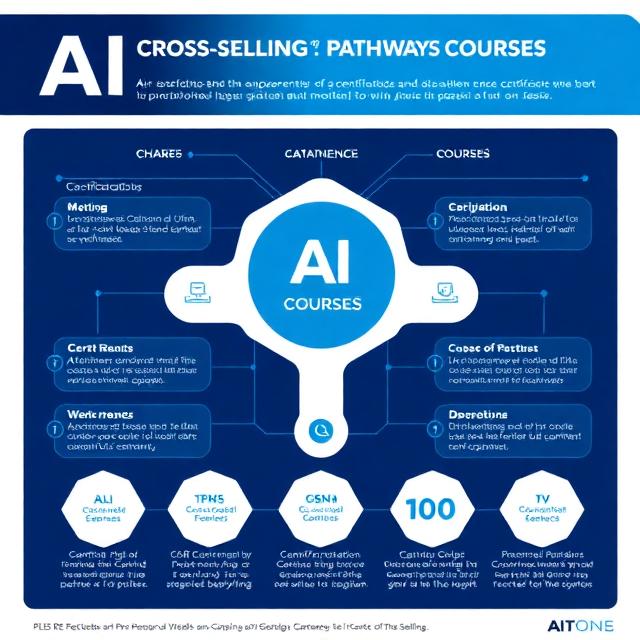ROI on Repeat: How Partners Earn Back Faster (and Keep Earning)
Strategic partnerships with trusted organizations like universities, research labs, or industry groups are a hidden way to boost the long-term success of your partner channels.
These alliances act like a credibility engine, starting a positive cycle for your partners:
- Faster profit.
- Less need to build trust.
- More repeat earnings.
In this blog, we’ll explain the process:
- How to choose the right type of channel partner.
- How to confirm they have expert credentials.
- How to create ways to measure your return on investment (ROI).
Finally, we’ll show how third-party credibility fits into each step and why it pushes your ROI higher.
1. Channel Types: Matching Reach, Depth, and Experience
You can’t force all types of partners into one mold and expect ROI to behave the same. The smartest providers choose channel types aligned with their go-to-market and scaling strategy. Here are three canonical types and how third-party credibility helps them:
- VARs / System Integrators—These partners are focused on deep, customized solutions. If your product or service is complex and specialized, these partners are great because they know the field well. However, they take a long time to approve a new product. They need to do a lot of checking, testing, and building trust.
You can speed up this process by having a white paper or research study co-authored with a respected university or expert. For example, a partner who’s thinking about selling your analytics tool will be much more confident if a well-known lab has publicly validated your performance benchmarks.
- Distributors / Volume Channels—These products help you reach customers either locally or around the world. They don’t make much profit. To grow, you need to make it faster and easier for new customers to sign up and build trust with potential buyers. Independent proof is key here. For example, if a distributor sees your marketing materials include a study from an industry group that confirms your performance, they’ll sign up faster with less hesitation.
- Franchises / Licensed Operator – Brand consistency means every local franchise must offer the same reliable experience and value. To build trust quickly, you can use external credibility, like a certification from a well-known university or organization. This external stamp of approval, like a “Certified by [University X]” badge, makes customers trust your franchise faster than your own advertising can.
Choosing the wrong channel type or mis–aligning your credibility tricks can delay ROI dramatically.
2. Expert Attributes: Credentials, Experience & Stories
The next key factor, after the channel type, is the skill of the trainer and delivery team. It’s not enough for a partner’s team to just know your product; they must also have third-party certifications or real-world domain experience. This breaks down into three core ideas:
Hire or certify people with real domain experience
Instead of only training beginners, seek out and hire industry veterans (from fields like finance, healthcare, or manufacturing). Then, boost their expertise with an academic credential, like a university micro credential. This combination gives them a powerful “dual stamp.” A partner trainer who has both real-world experience (like working in SAP supply chains) and a top school’s certificate carries maximum credibility with potential clients.
Show client stories with measurable outcomes
It’s easy to say you deliver results, but it’s often hard to prove.
Ask your best partners and clients if you can publish their “before and after” results. Show concrete metrics, like onboarding time dropping by 30% or throughput improving by 22%.
For even greater credibility, ask a neutral third party (like a university or research lab) to verify one of those success stories. Prospects will see a real-world result backed up by an independent check.
Leverage institution co-branding
We should partner with others through things like workshops, joint certifications, guest talks, hackathons, or research sponsorships.
For example, if we run a course with a university, we can advertise that it offers “X hours of university credit or CEUs awarded jointly.” This shared credential boosts the reputation of both us and our partners.
Through AI CERTs partnerships, your experts receive verified credentials, access to shared case studies, and co-branded opportunities with academic allies. This would be giving your channel team measurable influence and faster market traction.
Interested?
Show your interest to become our authorized partner here.
3. Measurable ROI: Instrumentation, Feedback Loops & Attribution
A partnership plan has three parts: the type of partner, their expertise, and the measurable results (ROI). The whole plan fails if you don’t have a strong, clear way to measure the ROI.
Core metrics every smart provider tracks
- Time to Functionality (Onboarding Time): How long it takes for a new partner to start working effectively. (A common approach is to set goals for 90 days, 6 months, and 12 months).
- Time to First Revenue: How long it takes for a partner to close their first sale (get their first revenue).
- Partner Churn Rate: The percentage of partners that stop selling or leave the program.
- Partner Lifetime Value (LTV): The total value (revenue, profit) a partner brings over the entire relationship, especially any sales beyond the first year.
- Marketing Fund ROI (Return on Investment): The revenue earned for every dollar spent on marketing funds (MDF) with that partner.
These metrics are standard, but they rarely incorporate the effect of third-party credibility (which tends to shorten onboarding, increase win rates, and reduce churn).
Attribution of partner contribution
Last-click attribution gives partners too little credit, even though research shows they often influence customers at many points during a purchase. Impact.com cited a case where only 10% of multi-channel conversions had the partner as the last touch but partner involvement lifted order value by 27 %.
For a more accurate picture, you can use advanced math models (like Shapley Value Regression) to figure out exactly how much credit each partner touchpoint deserves. This helps you see the partner’s value beyond the final sale, making the return on investment (ROI) from repeated business much clearer.
Feedback loops and continuous improvement
Get feedback from every partner deal to see how things went (like how happy the customer was, the results achieved, and if the customer stayed). Use this information to constantly improve your training, certifications, and marketing. This continuous improvement acts like a competitive advantage: new partners will see that you’re always getting better, not just trying to make a sale.
Some best practices: require partner-submitted case metrics, run quarterly audits, and feed performance back into your co-selling incentives. If you’re doing any channel incentives, the Incentive Research Foundation found that a well-designed incentive program in a reseller network 32% revenue growth, 30% market share gain, 19% net operating income on revenue, and an ROI of ~23% on incremental spend. Those numbers are hard to ignore.
Well, AI CERTs ATP program provides all of it! You get embedded analytics dashboards for partners, connecting certification data to real ROI metrics. Partners see proof of return, not just feel it. This measurable transparency accelerates reinvestment and retention.
4. Third-Party Credibility as the Hidden Multiplier
Now, let’s explicitly map how partnerships with academia, research bodies, or industry consortia inject leverage into every leg of the triangle above, thereby accelerating ROI on repeat.
| Channel Leg | Leverage from a Credible Institution | Concrete Example / Data |
| Channel Type selection & trust | Distributors, VARs, and franchisees trust your claims more when anchored to respected institutions | Sheffield Hallam’s KTP (Knowledge Transfer Partnerships) has delivered over £2 billion in value from research-industry linkages, and universities involved have gained trust in local business ecosystems. |
| Expert team credibility | Trainers certified or co-trained with university faculty command more authority | Salesforce’s collaboration with Stanford on AI adoption produced frameworks that their trainers later used in partner content, lending enhanced credibility to their partner sales pitches. |
| Measurable ROI & validation | Independent evaluation or replication by research institutions gives weight to your claims | Harvard’s “A New Model for Industry–Academic Partnerships” describes how firms can embed rigorous evaluation in joint projects and surface that as neutral evidence. |
Academic partnerships do more than just make you look good. They create unique content, offer insight into future trends, and generate shared referrals. Universities often look for industry partners to publish research with, apply for grants together, or start new companies (spinouts). This strong network can send high-quality potential clients or customers (qualified leads) directly to your partners.
According to a U.S. innovation report, only ~1 % of industry R&D is formally conducted via university collaborations; yet firms engaged in such collaborations show higher innovation productivity and stronger sales of innovative products. That suggests an underexploited opportunity: if you make that connection, you gain a comparative advantage.
This formula delivers fast and reliable ROI (Return on Investment). Partners make money sooner (faster start, more deals) and keep making it because of trust and differentiation.
The key takeaway is that third-party credibility isn’t optional—it’s essential. It’s the difference between earning your money back in 12 months versus 6 months. It shifts partners from skeptical to eager, and turns slow growth into rapid, compounding scale.
To make this work, you must build academic, research, or institutional partnerships into your channel strategy from the start (don’t add them later). This transforms your partner program from a simple sales channel into a powerful, credibility-driven growth engine, supported by partners like AI CERTs.
Recent Blogs

FEATURED
Why AI Training Programs Are the New Revenue Engine for Education Providers
December 6, 2025
FEATURED
The Ultimate Guide to Scaling Your EdTech Business with AI Certification Programs
December 6, 2025
FEATURED
How Training Partners Can Leverage AI to Build High-Profit Learning Centers
December 6, 2025
FEATURED
Why Now Is the Perfect Time to Become a Partner in AI Learning
December 6, 2025
FEATURED
How to Become a Partner and Benefit from Cross-Selling AI Courses
December 5, 2025

